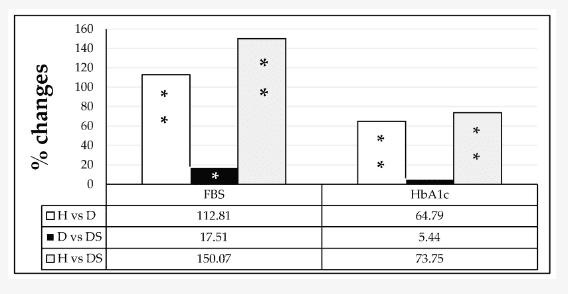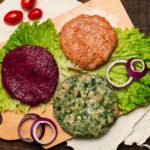
Michaela Dvorakova
(MFood Tech, R&D Specialist)
There are food additives that are permitted for use in Australia and New Zealand, but are banned in other countries. Should we wonder why?
One of the reasons this might happen can be due to the lack of permission, where manufacturers have never sought permission for the use of the specific additive, and they are using alternatives.
Another reason is due to “circumstances unique to AU and NZ”, such as different dietary exposure, which might be difficult to comprehend since New Zealand’s consumption of processed foods is almost on the same level as in Europe and the US.
Also, a 2019 University of Auckland report states that 69% of products found in supermarkets are categorised as ultra-processed.
Banned food colors
In 2008, Britain’s Food Standards Agency agreed that these six artificial food colourings:
- Tartrazine (E102)
- Quinoline Yellow (E104)
- Sunset Yellow (E110)
- Carmoisine (E122)
- Ponceau 4R (E124)
- Allura Red (E129)
should be phased out, due to a study of University of Southampton made in 2007, which found a link between food colours and hyperactivity in children.[3]
You can read more about this study in our previous article — Why are food additives getting banned? (Part 2).
The European Food Safety Authority (EFSA) decided to re-evaluate all food colours authorised before 2009 and they assessed 41 food colours.

Source: Miller, M. Potential impacts of synthetic food dyes on activity and attention in children: a review of the human and animal evidence. (2022)
As one of the consequences of this re-evaluation, from 2010, any food and drink containing any of the six colours, except drinks with more than 1.2% alcohol, have to provide a warning on the label that the colour “may have effects on activity and attention in children”.[4]
All six colours are allowed in New Zealand
Tartrazine
Banned: Austria, Norway, UK (voluntarily)
Tartrazine is a synthetic lemon yellow azo dye, also known as E102 or Yellow 5. Tartrazine appears to cause the most of allergic and intolerance reactions of all azo dyes.[5]
Quinoline yellow
Banned: US, Canada, UK (voluntarily)
Quinoline yellow is greenish/yellow dye. In New Zealand, Quinoline yellow is permitted in beverages and food like sauces, decorations and coatings.[6]
Sunset yellow
Banned: UK (voluntarily)
Sunset yellow, known also as Yellow 6, is yellow/orange food colourant used in candy, desserts, snacks, sauces, and preserved fruits.[7]
Based on the re-evaluation made by EFSA in 2010, we can tell that Sunset yellow has no carcinogenicity, genotoxicity, or developmental toxicity in the amounts at which it is used.[4]
Azorubine/Carmosine
Banned: US, Canada, Norway, Sweden, Japan, UK (voluntarily)
Azorubine, also known as carmosine or red no. 10, is a red solid dye, used in dried fruits, cheeses and some alcoholic beverages. Even though EFSA re-evaluated this food colouring and approved it for use as a food additive, azorubine is banned in other countries, such as the US, Canada, Norway, Sweden and Japan.[7]
The UK also asked for a voluntary removal. One of the reasons is that azorubine can stimulate a child’s nervous system and lead to the development of psychological diseases. Another is the carcinogenic properties which are connected to urinary bladder cancer.[8]
Ponceau 4R
Banned: US, Canada, Finland, Norway, UK (voluntarily)
Ponceau 4R is a strawberry red azo dye used in a range of alcoholic and nonalcoholic beverages, and a variety of foodstuffs including confectionery, desserts, cheeses, meats, preserved fruits, and sauces.
This additive is banned in the US, Canada, Finland, Norway and voluntarily in the UK. Reasons for this are mostly possible carcinogenicity of this additive and its impact on hyperactivity in children.
However, there is no evidence of carcinogenicity, genotoxicity, neurotoxicity, or reproductive and developmental toxicity at the permitted dietary exposures.
Ponceau 4R is very poorly absorbed from the digestive tract and also does not accumulate in any tissue. JECFA (The Joint FAO/WHO Expert Committee on Food Additives) concluded that Ponceau 4R is not carcinogenic, genotoxic, neurotoxic, or caused reproductive or developmental toxicity.[7]
Allura red AC
Banned: UK (voluntarily)
Allura red is a red dye, which can be used for colouring food, including beverages, frozen treats, powder mixes, gelatin products, candies, icings, jellies, spices, dressings, sauces, baked goods and dairy products.[9]
Allura Red AC has few health risks associated with it in comparison to other azo dyes. It may cause an adverse reaction in the small number of people with an aspirin intolerance or allergy, manifesting itself as a skin rash (urticaria) and/or nausea.[10]
Other dyes
Green S
Banned: US, Canada, Norway, Japan
This dye can be used in mint sauce, desserts, gravy granules, sweets, ice creams, and tinned peas. Green S belongs to the group of triarylmethane colours (same as Brilliant Blue FCF).
These dyes are poorly absorbed and mainly excreted unchanged. Brilliant Blue FCF lacks significant genotoxicity effects, while data related to Green S are not available.
In higher doses this food dye can cause allergic reactions, asthma and it’s also discussed because of its link with hyperactivity in children.[7]
Brilliant Black
Banned: US, Switzerland, Japan
This synthetic black food colouring is used as an addition to sauces, blackcurrant jams, or caviar.
Same as Green S, in higher doses this food dye can cause allergic reactions, asthma and it’s also discussed because of its link with hyperactivity.[11]
Brown HT
Banned: US, Belgium, Denmark, Germany, Norway, Switzerland, France, Sweden, Austria
Brown HT, also called chocolate brown, is used mainly in chocolate cakes, but also in milk, cheese, jams, fruit products, and fish.
This dye can cause some allergic reactions like asthma or skin irritation.[12]
Amaranth
Banned: US
Amaranth, also known as red dye 2 or allure red, is a red azo dye and should not be confused with a pseudo grain of the same name.
Since 1976, amaranth dye has been banned as a suspected carcinogen in the United States by the Food and Drug Administration (FDA).[13]
Since that time EFSA and JECFA have both assessed more recent studies and both have re-evaluated amaranth as a safe food additive.
Amaranth can be found in alcoholic beverages, red soft drinks, cake mixes, ice cream, jams, jellies, and many other processed foods.[14]
Vegetable carbon
Banned: US
Vegetable carbon is a food dye produced by the carbonisation of vegetable materials such as wood, cellulose residues, peat and coconut and other shells.
This additive is not permitted in the US, because of the possible presence of polycyclic aromatic hydrocarbons, which have shown to cause different types of cancers.
However, EFSA’s recent 2012 review of the safety of vegetable carbon came to a different conclusion.
EFSA found that there is a significant difference between the levels that people may consume in their diet and the levels shown to induce cancer.
Typical applications of vegetable carbon include confectionery, bakery products, decorations, cheese coating or black caviar substitute.[15]
Banned artificial sweeteners
Cyclamate
Banned: US
Cyclamate is a sweetener, 30-50 times sweeter than table sugar (sucrose).
Cyclamate was banned in the US in 1970 due to a 1969 rat study implicating the additive as a bladder carcinogen. However, other studies since then could not replicate these results.
This led to US agencies (the Cancer Assessment Committee of the FDA and the National Academy of Sciences) concluding it is not a carcinogen, and FSANZ (Food Standards Australia New Zealand) did the same.

The results suggest that saccharin and cyclamate increased HbA1C (+11.16%), and in diabetic patients consuming sweeteners showed increased FSG (+17.51%).
Source: Oliveira, D. Impact of Long-Term Cyclamate and Saccharin Consumption on Biochemical Parameters in Healthy Individuals and Type 2 Diabetes Mellitus Patients. (2023)
Cyclamate is available as sodium or calcium salt of cyclamic acid. It is a white odourless powder, often used along with other artificial non caloric sweeteners, especially saccharin, aspartame, and acesulfame K.
The advantage of cyclamate is its lower cost and also its heat stability.[1]
RELATED — Artificial Sweeteners: Are they a Healthy Substitute to Sugar?
Alitame
Banned: EU
Alitame is an aspartic acid-containing dipeptide sweetener. Alitame is about 2000 times sweeter than sucrose (table sugar), about ten times sweeter than aspartame, and has no aftertaste.
Alitame has been approved for use in Mexico, Australia, New Zealand and China. Danisco has withdrawn its petition for using alitame as a sweetening agent or flavouring in food in the USA.
So far it’s not approved in the EU, because according to EFSA there are not enough studies available.[16]
Banned preservatives
Ammonium phosphate
Banned: EU
This substance is typically used to enhance the growth of plants, yeasts and bacteria used in dairy cultures, fermentation, and dough improvers.
Ammonium phosphate is GRAS (Generally Recognised As Safe) in the US, but it’s not listed as permitted by EFSA. No request for permission for the food additives have been sought.[1]
Banned flavouring agents
Ammonium malate
Banned: EU
Ammonium malate is widely used as a flavouring agent and as an acidity regulator. This food additive does not appear to have permission in the US or Europe.
Again, it is possible that no request has been sought. Malic acid and its sodium and calcium salts (sodium malates, calcium malates) are permitted food additives without limit in the EU.[1]
Controversial additives
Currently, there are a few food additives whose safety is being discussed, and some countries have already banned them since the potential risk to human health seems high.
Titanium dioxide
Titanium dioxide is a natural pigment, used to make food whiter or brighter. It belongs to a group of food colourants.
In Australia and New Zealand it is allowed to be added to a wide range of foods. For example, you can find titanium dioxide in Skittles or cake icings.[17]
Titanium dioxide is basically composed of white nanoparticles. A Polish study from 2019 was focused on these nanoparticles and their accumulation in the body, especially in organs like lungs, liver and kidneys.

They found out that nanoparticles can have a genotoxic defect and can induce inflammation due to oxidative stress.[18]
In 2021, EFSA shared the conclusion of a scientific review that considered thousands of studies. It says that researchers could no longer consider titanium dioxide safe, because they can’t exclude genotoxicity concerns.
Researchers determined that titanium dioxide particles do have the potential to cause breaks in strands of DNA and damage to chromosomes.
Still, there were not enough studies available to deduce how often those changes happen in people or if they’d be significant enough to cause health issues.[19]
FSANZ has completed a review of the safety of titanium dioxide (TiO2) as a food additive and found no concern that titanium dioxide poses a risk for human health.
Currently titanium dioxide has been banned in the European Union since mid-2022. The US allows companies to add minimal amounts of titanium dioxide to food.
In New Zealand, food manufacturers are also using less and less of titanium dioxide. A Countdown spokeswoman said the supermarket did not allow titanium dioxide in its own-brand products.[20]
Propylparaben
Parabens are used as preservatives and they are allowed for use in foods, drugs, cosmetics and toiletries.
Examples of food, where you can find propylparaben, are bakery products, cheeses, soft drinks, beer, wines, jams, jellies, preserves, pickles, olives, syrups, or fish products.[21]
In 2002, Japanese scientists from the Tokyo Metropolitan Institute of Public Health discovered that propylparaben decreased sperm counts in young rats. Other researches have confirmed effects on the endocrine system.[22]
In 2004, EFSA published a science opinion saying that presumed safe exposure level for propylparaben in food is no longer valid, and they referred to the Tokyo study. Based on that, in 2006, regulators removed propylparaben from the list of food additives authorised for use in the EU.[23]
In New Zealand propylparaben is still approved
A spokeswoman for FSANZ said 2500mg of propylparaben could be added to 1kg of food, and they have no concerns relating to the safety of this additive.
AUT University food science professor Owen Young said that although one study found the preservative affected rodents’ sexual function, the US Food and Drug Administration had concluded there was no evidence to suggest its consumption had any adverse effects on rodents or humans.
Even if it did, for a person to consume the equivalent amount fed to rats in the Japan-based 2002 study, “they’d have to eat about 200kg of cake a day for a month”, Professor Young said.
In 2015, two supermarket chains say their supplier has removed this preservative. Countdown and New World sold chocolate cake listing the additive propylparaben, also known as preservative 216, in its ingredients.[24]
If you are interested in similar articles, we suggest checking our section on The Future of our Food.
Michaela is a qualified food technologist, originally from the Czech Republic, where she successfully graduated and earned a Master’s degree from University of Chemistry and Technology. Michaela’s field of study was chemistry and analysis of food and natural products, and upon finishing her studies she became a part of an R&D team focusing on nutritional plant-based food.
Healthy lifestyle, sustainability, and human and animal well-being are the main reasons why Michaela is interested in natural food and products, with a minimum amount of processing. Also, being such a food lover, she believes that food can be healthy and delicious in equal measure, and at the same time, good and friendly to the environment, which is a win-win for all of us.
References
(1) Food Standards Australia New Zealand. Colours and food additives reported as banned. Retrieved from https://www.foodstandards.gov.au/consumer/additives/pages/coloursandfoodadditi5752.aspx
(2) Amelia Wade. “Additives safe, said food makers.” Retrieved from https://www.nzherald.co.nz/nz/additives-safe-say-food-makers/WJY4DHHOWJPVC2544Y2ITERKOY/
(3) University of Southampton. Food Standards Agency cites Southampton study in new recommendation on food additives. Retrieved from https://www.southampton.ac.uk/news/2008/04/food-standards-agency-cites-southampton-study.page
(4) European Food Safety Authority. Re-evaluation of food colours: EFSA completes major programme. Retrieved from
https://www.efsa.europa.eu/en/press/news/160914-0
(5) S.L. Taylor, J.L. Baumert, in Encyclopedia of Agriculture and Food Systems. Tartrazine (FD&C Yellow #5).
(6) D.R. Wallace, in Encyclopedia of Toxicology (Third Edition). Quinoline.
(7) J. König, in Colour Additives for Foods and Beverages.
(8) Amin, Faraidoon A.S.M.. “Pathophysiological Effects of Azorubine on Female Reproductive Organs and Hormones in Sprague Dawley® Rat.” International Journal of Medical Research and Health Sciences 7 (2018): 57-62.
(9) E. Diacu, in Encyclopedia of Food and Health.
(10) Chem Europe. Allura Red AC. Retrieved from https://www.chemeurope.com/en/encyclopedia/Allura_Red_AC.html
(11) European Food Safety Authority. Scientific Opinion on the re-evaluation of Brilliant Black BN (E 151) as a food additive.
(12) European Food Safety Authority. Refined exposure assessment of Brown HT (E 155).
(13) U.S. Government Accountability Office. Food and Drug Administration’s Regulation of Food Additives. Retrieved from https://www.gao.gov/assets/100521.pdf
(14) European Food Safety Authority. Scientific Opinion on the re-evaluation of Amaranth (E 123) as a food additive.
(15) European Food Safety Authority. Re-evaluation of calcium carbonate (E 170) as a food additive in foods for infants below 16 weeks of age and follow-up of its re-evaluation as food additive for uses in foods for all population groups. Retrieved from https://efsa.onlinelibrary.wiley.com/doi/10.2903/j.efsa.2023.8106
(16) ECHEMI group. Alitame. Retrieved from https://www.echemi.com/products/pid_Rock30740-alitame.html
(17) Food Standards Australia New Zealand. Review of titanium dioxide as a food additive. Retrieved from https://www.foodstandards.gov.au/consumer/foodtech/Review-of-titanium-dioxide-as-a-food-additive
(18) Musial J, Krakowiak R, Mlynarczyk DT, Goslinski T, Stanisz BJ. Titanium Dioxide Nanoparticles in Food and Personal Care Products-What Do We Know about Their Safety? Nanomaterials (Basel). 2020 Jun 4;10(6):1110. doi: 10.3390/nano10061110. PMID: 32512703; PMCID: PMC7353154.
(19) European Food Safety Authority. Titanium dioxide: E171 no longer considered safe when used as a food additive. Retrieved from https://www.efsa.europa.eu/en/news/titanium-dioxide-e171-no-longer-considered-safe-when-used-food-additive
(20) Glenn McConnell. “Common food colouring E171 is likely unsafe, but it can still be sold in NZ.” Retrieved from
(21) N.H. Choulis, in Side Effects of Drugs Annual. Propylparaben.
(22) Oishi S. Effects of propyl paraben on the male reproductive system. Food Chem Toxicol. 2002 Dec;40(12):1807-13. doi: 10.1016/s0278-6915(02)00204-1. PMID: 12419695.
(23) European Food Safety Authority. EFSA advises on the safety of paraben usage in food. Retrieved from https://www.efsa.europa.eu/en/news/efsa-advises-safety-paraben-usage-food
(24) NZ Herald. “Controversial additive no longer in our cake, assure supermarkets.” Retrieved from https://www.nzherald.co.nz/lifestyle/controversial-additive-no-longer-in-our-cake-assure-supermarkets/YISAI3HBCC5HHTQEQRTB4NZJUQ/






